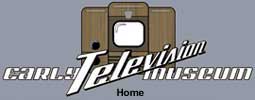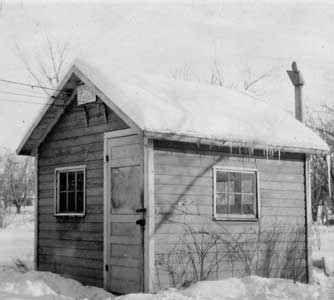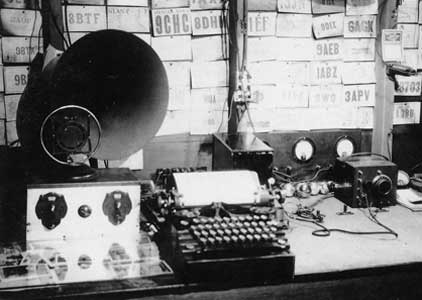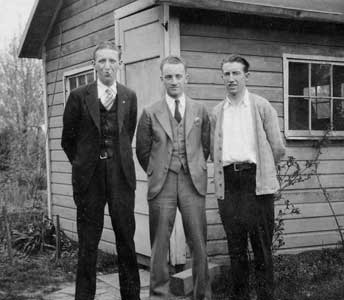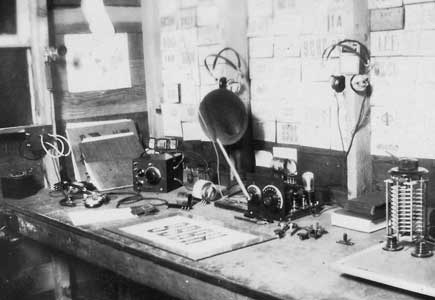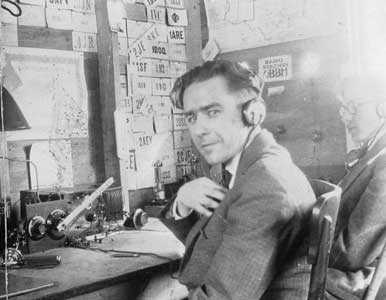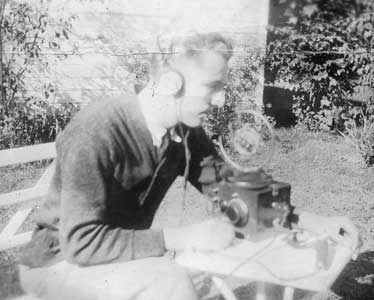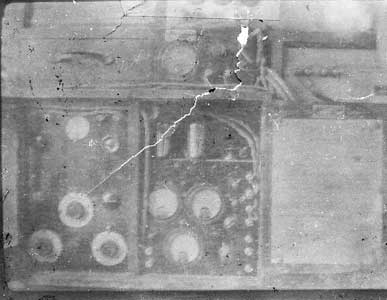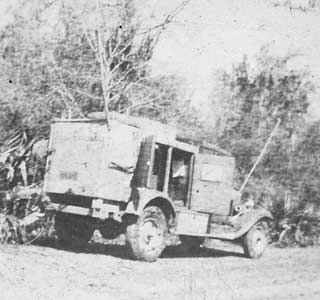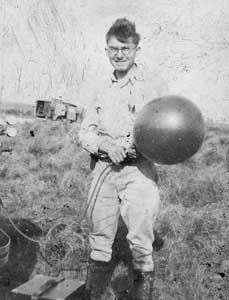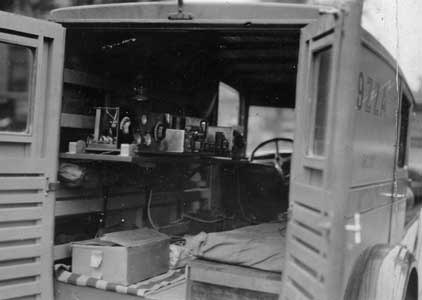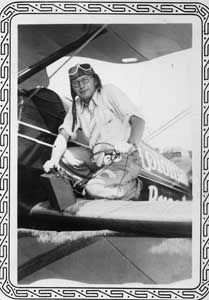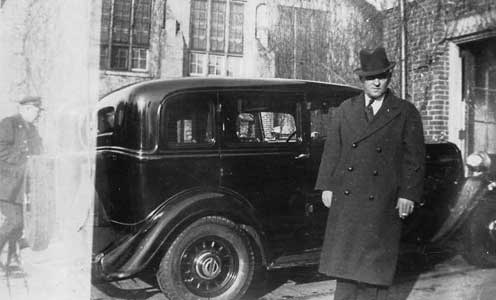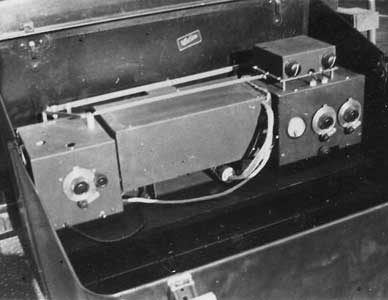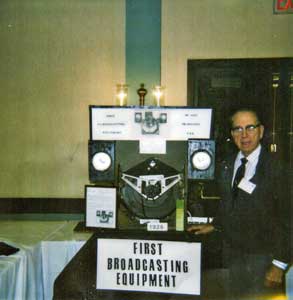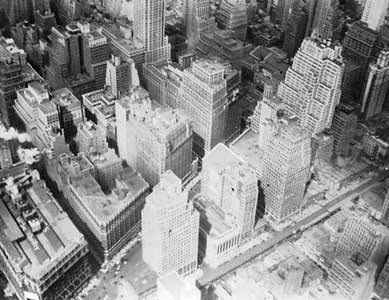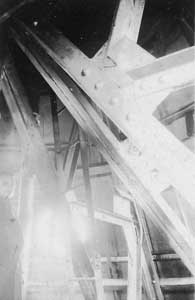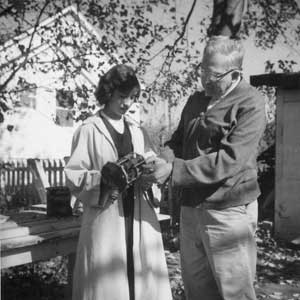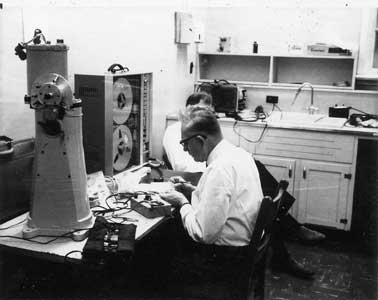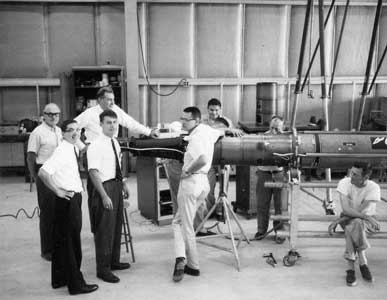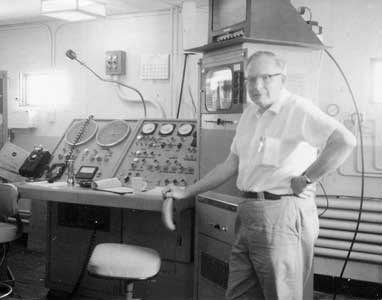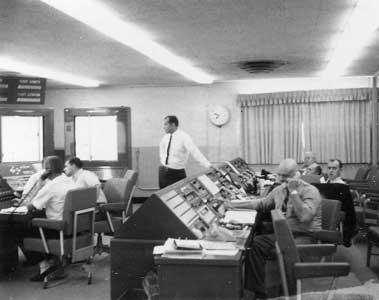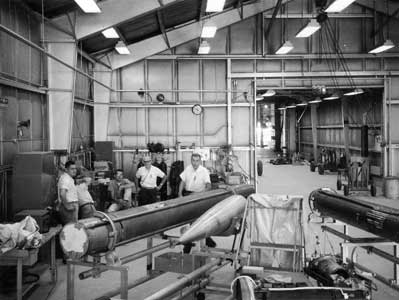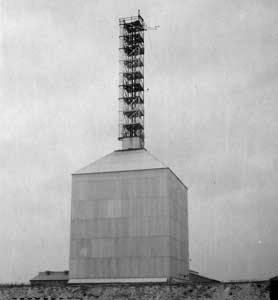Mechanical Television Leo Hruska - Mechanical TV PioneerLEO J. HRUSKA (1907-1979) Leo J. Hruska, of Cedar Rapids, Iowa, was one of a relatively small number radio amateurs who corresponded and collaborated among themselves and experimented with radio reception and transmission including that of television in the mid- to late 1920’s. Hruska actually operated his own television broadcast station for perhaps three years (1929-1932) and was collaborating a bit with some of the country’s foremost television innovators. Records of his correspondence with Western Television Corporation in Chicago, IL and with the Jenkins Laboratories near Washington, D.C. for instance reveal some of the nature of how this correspondence aided television’s development. Starting in 1928, Hruska’s contacts with the Jenkins Laboratories was mostly concerned with the strength and frequencies of the Jenkins signals that Hruska was picking up in Iowa. Jenkins was a premier mechanical television innovator of the time and is often considered one of the inventors of television. (Jenkins/LJH letters: Nov.9, 1928; Feb.18, 1928; Apr.29, 1929; Jul. 26, 1929). Jenkins, according to the December 23, 1928 Cedar Rapids Gazette “asked to add this boy’s name (Hruska) to the honor roll of pioneer workers in television.” The correspondence with WTC also were mostly directed at signal quality with various wavelength transmissions, but one WTC letter (Dec. 23, 1931) to Hruska included an interesting reference to Hruska’s transmissions mentioning that “It may be surprising to you to know that while one of our salesmen was demonstrating television to some dealers in Indianapolis, he accidentally tuned in on your wave band and was able to pick up your signal although it was too faint for him to bring in a picture. It surprised him to such an extent that I believe he could hardly believe it himself.” (WTC/LJH letters: Apr. 9, 1931; Dec. 23, 1931; Apr.7, 1932) Hruska’s interest in electronics started in his early teens and was fortified by studies both at Coe College in Cedar Rapids (degree in physics and math), and at the University of Iowa in Iowa City where he was a Lecture Assistant and Apparatus Curator for the Physics Department. In a small shed at his 2619 Bever Ave. home he assembled, by hand and mostly from basic components --- and experimented with --- receivers, transmitters and other electronic devices, sometimes with the interest and participation/collaboration of others [some of whom include: George Miller (Georges?); Ben (last name?); Clair Miller (“Claris”, 9EFS); Bert (last name? 7EDW), Charlie (last name? WEBB); Chuck Baegel (W9CVU); and Art Collins (9CXX). Leo’s call letters were W9BBH. Collins later started Collins radio Company as a sole owner (although likely collaborating with both Leo Hruska and Clair Miller)]. Leo Hruska and the younger Art Collins (Collins was two years younger than Leo) got together on a number of electronic projects and experiments in the late 1920’s and were still corresponding at least until July 10, 1930. According to Leo (pers. Communication to author) one project that he and Art were contemplating involved reflecting a radio beam off of the moon, a feat that Collins Radio Company actually accomplished in (As reported in Life magazine, 1948?). The young men were the only ones able to communicate by radio, at least periodically, with a 1925 MacMillan Ellesmere/Baffin Islands expedition; they supplied progress flashes to the newspapers. Leo related to me that the ability to communicate with the 1925 MacMillan Artic expedition was partly due to a particular antenna ground array that they had installed at Leo’s house and that news of the expedition was given to reporters at the Hruska house. Expedition radio operator John Reinartz later sent Leo a small USA flag that had been with the trip (since given to his daughter-in law at her naturalization ceremony). This account differs a bit from the episode as recounted in a Collins biography (The First 50 Years --- A History of Collins Radio Company by Ken Braband). A Wikipedia article stated that “The expedition is noted for the successful demonstration of SW radio in communications from the Arctic Region.”
n 1929 and into the early 1930’s Hruska worked for a number of months as a Crew Chief (“Observer”) on a Geophysical Research Corporation (GRC) seismic crew in Kansas and along the Texas Gulf coast operating the various radio, recording and other electronic equipment; in a somewhat pioneering mode, experimented with “mobile” equipment by installing the equipment in an airplane, in a mule-drawn wagon in a boat (Texas), and in a Chicago police car. (aside: in 1964 Hruska’s son Donald worked for a summer for Geophysical Services Inc., a derivative of GRC) Following this Hruska worked as a radio operator, “sparks”, on ships; one trip was from New Orleans to Central America --- four “Bolsheviks” were shot in Honduras when he was there --- and the other trip was to England where he visited the Baird Television Laboratory, and “I got some interesting ideas [at the Baird Lab] and can hardly wait til I can try them out myself” he also made a flying trip to Paris.
Following receipt of a degree in Math and Physics from Cedar Rapids’ Coe College Leo worked for WTC in Chicago, staying there as broadcasting engineer until they closed in 1933; at that time, he was able to salvage one the earliest WTC transmitter and displayed it at some sort of electronic/technology symposium in the 1960’s or ‘70’s.
Hruska then worked for about five years for RCA, first in Chicago and later at their Camden, NJ facility. No records seem to exist detailing his duties with RCA, but it is assumed that he was in the thick of television development there as it was during that period that there was high-level competition and litigation among a number of television inventors and RCA’s Zworykin and Sarnoff. Possibly Hruska was involved in antenna design as he seemed to have access to the antennas atop the Empire State Building in New York (RCA/NBC were collaborating in the building at that time).
Leo Hruska then went on to work for Bendix Radio, the G.L. Martin Company, Johns Hopkins University, Radiation (applied Physics) Laboratory and W.G. Finch Patent Law Office. His activities at those places are probably best indicated by his resumé: Bendix Radio (1937-1947: Principal Engineer. Joined Bendix Radio on inception in Chicago. Transferred entire Northwest Airline’s radio system from St. Paul to the new Minneapolis airport. Designed radio transmitters for all branches of U.S. Government, including famous Model SCR-522 which matured into largest radio contract issued. Set up vacuum metallizing systems for coating piezo crystals in large quantity production. Designed GCA transmitter system and coined the term “talk-down” for this blind landing aircraft facility. Wrote instruction books. Set up first radar at Cape Kennedy (before it was named after the president) Headed Police Radio and Flightweight groups designing civilian mobile aircraft radio and navigation equipment. Engineered air-transportable Loran systems for South Pacific theater of war. G.L. Martin Co. (1947-1955): Principal Engineer. Designed high power radar guidance equipment for missiles. Set up and headed electronics model shop. Built and installed system for Matador missile at Cape Canaveral, Florida (now Cape Kennedy). Worked on Viking rocket. Designed telescopic mast, microwave equipment, airbourne weather radar. In charge of more than 50 physicists, engineers, and technicians. Johns Hopkins U. Radiation Laboratory (1955-57): Research Scientist. Designed and built electronic devices, jammers and counter-measures. In charge of model shops. Made and used sophisticated instruments. Designed and constructed scanning radars and complex TV systems. In charge of group of physicists, engineers and technicians. Attended and contributed to lectures and symposia. (Hruska may have also worked for Hopkins (Applied Physics Lab?) again later; working closely with William (“Bill”) Fastie participating in projects that included designing a compressed UV spectroscope that was eventually used on one of the Apollo moon shoots; he served as coordinator between the Applied Physics Lab and NASA, communicating regularly between Hopkins and the Godard Space Flight Lab.)
LJH showing UV spectrometer to neighbor Jo Ansley Bridge From 1955 until his death in 1979 Hruska designed and built equipment on his own as “Hruska Radio”. Products of most “Hruska Radio” interest included a shortwave AM/FM converter that plugged into car radios via the antenna port; it enabled regular car radios to receive police or fire call signals and was sold for $34.95 each. He also designed and built an extremely sensitive photometer that he sold to many domestic and foreign university research laboratories (emanations from stars, bioluminescent deep ocean organisms, etc.) as well as to a number of space agencies for use on the Apollo projects. He provided engineering service for many of his own projects and for Johns Hopkins’ rocket projects, the latter of which involved work at Fort Churchill in Canada, and at White Sands in New Mexico. Hruska is known to have worked on rocket projects at White Sands, NM, Wallops Island, VA, and Ft. Churchill, Manitoba:
Hruska’s interest in television extended well into the 1940’s and ‘50’s. In the late 1940’s he built a mechanical color TV camera with governor-controlled and synchronized discs, one of which contained spirally-arranged small condensing lenses and another that contained larger transparent discs of the three primary colors. He would stand a family or neighbor child in front of the camera which would then produce rough outlines on the receiver; “rough” because there were only a limited number (32?) of horizontal lines shown on the cathode ray tube (CRT). He assembled at about the same time a regular TV receiver in a large rectangular coffee can. The neighbor kids would all assemble in front of the receiver with a covering blanket to keep out the light while they watched Howdy-Doody on the small 3-inch green CRT. Hruska delved deeply into curious and unexplained electronic and physical anomalies as illustrated by a letter written in response to an article in an August 1950 Electronics magazine (“TV Interference from Incandescent Lamps”, page 166). In his letter he offered the results of some related experiments he had done earlier that contradicted the gist of the article. He described having heard a high-pitched sound on his mobile 5-meter station at certain street intersections that he later determined was caused by a specific trolley operated light signal. He experimented at home and found that the trolley signal was modulated by various commutator ripples on the line. He continued on with his experiments at home with a similar lamp using R.F. to light the experimental lamp and discovered that the R.F. modulation produced modulated VHF output from the lamp (the author recalls being directed to hold his hand near a similar experimental lamp hookup to change the wavelength). The experimentation went on to the point that Hruska constructed a vacuum tube to prove the theory “the oscillation will possess pulse character on 60 cycles A.C. since the potential must be suited to the transit time before oscillation can start. Therefore only the peaks of the house current produce an oscillation.” At the letter’s conclusion he cited articles in and four patents. Fun and somewhat innovative “home” constructions and “experiments that emanated from Leo Hruska when we were small (1940’s, early 1950’s) included a target and light-shooting gun that he made for a PTA gathering; the target contained a photo tube that rang a bell when activated by light; the gun shot a small spot light. To demonstrate electric charges, he (forever didactic) would have a bunch of us children hold hands in a circle; a charge was introduced and as long as we kept our hands together, we felt nothing; when anyone released their grip --- they got a small zap. And one Halloween a small curtain of piano wires was hung in front of the door. When the older “trick-or-treaters” came he would introduce a small charge to the wires that would get the kids squirming for a moment. Glass-blowing that he learned while making his own tubes, later as a hobby, resulted in a few interesting items such as a “magic” bubbling tube containing a liquid that boiled with only hand heat. In summary, Leo Hruska’s 71-year life span extended from the early days of television well into the 60’s and 70’s space age, playing a significant part in American innovation and design.
|
||||||||||||||||||||||||||
